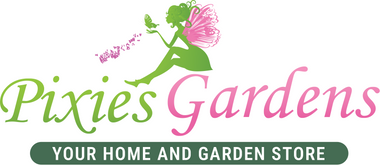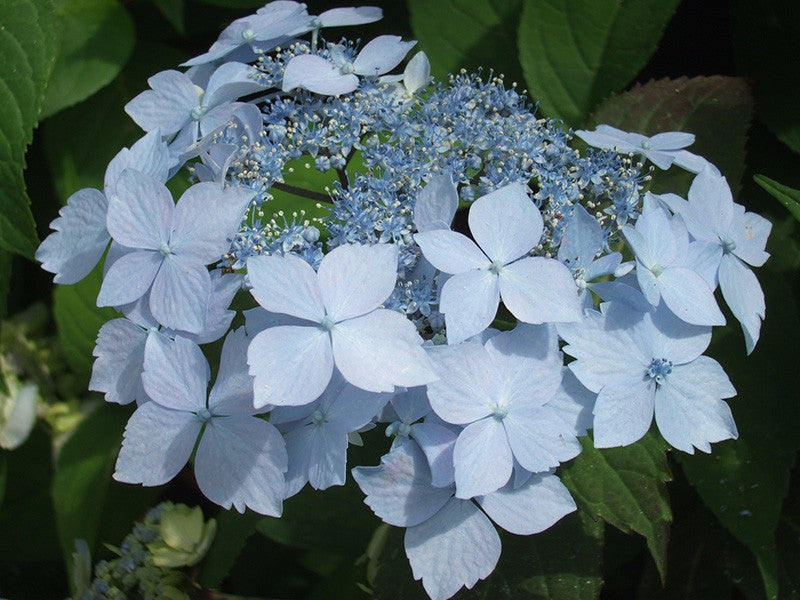Discover the enchanting beauty of shade hydrangeas with Pixies Gardens! 🌸 If you're wondering where to find shade hydrangea plants that thrive in low sun or partial shade, look no further. We offer a variety of shade-loving hydrangeas perfect for bringing charm to any shaded corner of your garden.
Curious about when to plant your snowball viburnum bush? Or perhaps you're thinking about how big a snowball bush can grow? Our expertise extends to these snowy delights as well! ❄️🌳 Explore our collection of snowball viburnum bushes and get ready to witness their breathtaking bloom.
And speaking of pruning your snowball viburnum bush, we've got you covered with expert tips and guidance. 🌱✂️ No matter how much your gardening experience is, Pixies Gardens is your one-stop botanical shop.
📖 History & Origin
Hydrangeas belong to the Hydrangeaceae family and are native to East Asia, particularly Japan, China, and Korea. For many centuries in history, hydrangeas were cultivated for their decorative and medicinal properties. Hydrangea macrophylla, commonly known as Bigleaf Hydrangea, is one of the most popular types found in gardens worldwide. Hydrangeas in shade are renowned for their large, showy flower clusters and have many varieties.
Some of them are the Oakleaf Hydrangea (Hydrangea quercifolia) and the Chinese Snowball Hydrangea (Hydrangea macrophylla var. quercifolia). Some hydrangea varieties thrive in full sun to partial shade. Shade hydrangeas such as Hydrangea macrophylla have evolved to grow in full shade.
🌳 Optimal Conditions for Cultivating a Shade Hydrangea Tree
Shade hydrangeas prefer acidic soils rich in organic matter. These conditions mimic their natural habitat, where they often grow. The presence of organic matter helps retain moisture and nutrients, which are important for the health of these plants. These are flowering shrubs that produce a spring flower (especially bush viburnum and hydrangea paniculata).
For more details about low sun hydrangea (shade hydrangea), refer to additional details from Pixies Gardens below:
|
Parameter |
Details |
|
Family |
Hydrangeaceae |
|
Growth Habit |
Deciduous shrub |
|
Height |
Varies by cultivar, typically ranging from 1 to 3 meters (3 to 10 feet) |
|
Lifespan |
20 to 50 years in optimal conditions |
|
Hardiness Zones |
USDA Zones 4 to 9 (varies by cultivar) |
|
Temperature (F) |
Optimal growth between 60°F to 75°F (15°C to 24°C) |
|
pH Range |
5.5 to 6.5 (slightly acidic to neutral) |
|
Sun Exposure |
Full shade to partial sun hydrangea |
|
Watering Needs |
Regular watering, particularly during dry spells; prefers consistently moist soil |
|
Pruning Requirements |
Prune in late winter or early spring (for viburnum snowball bush) to remove dead or weak branches and shape the shrub; deadhead spent flowers to encourage new growth and blooming |
|
Flowering Season |
Late spring to early summer |
|
Flower Color |
Varies by cultivar, including shades of white, pink, blue, and purple |
|
Fruit Ripening Season |
N/A (Hydrangea shrubs like snow ball bush are typically grown for their ornamental flowers, not fruit.) |
|
Fruit Color |
N/A |
|
Fruit Flavor |
N/A |
|
Propagation Methods |
Softwood or hardwood cuttings, division of mature plants, or layering |
|
Pests and Diseases |
Potential pests include aphids, spider mites, and scale insects; snowball viburnam is susceptible to diseases such as powdery mildew, leaf spot, and bacterial wilt |
|
Harvesting Time |
N/A |
|
Fertilizer Information |
Apply a balanced fertilizer (such as 10-10-10) in early spring before new growth begins. Avoid high-nitrogen fertilizers, as they can promote excessive foliage growth at the expense of flowers. Amend soil with organic matter to improve moisture retention and fertility. |
💮 Additional Characteristics & Information
- Pollination: While some shade hydrangea trees are self-pollinating, cross-pollination can enhance flower production and overall plant health.
- Varieties: Full shade hydrangea trees are available in many cultivars, with unique flowers, sizes, and bloom times.
- Uses: Hydrangea trees grow primarily for ornamental purposes, adding beauty and charm to shaded areas. The flowers are dried for floral arrangements and are also used in crafts.
- Health Benefits: Aside from being non-toxic, shade hydrangea flowers are helpful for skin health as an anti-inflammatory and calming ingredient in herbal teas.
- Storage: Full shade hydrangea trees do not produce fruit, but dried flowers can be stored in a cool, dry place for crafts.
- Commercial Cultivation: Shade hydrangea trees are widely cultivated for landscaping and ornamental purposes globally. Major producers include nurseries and growers in various countries, meeting the demand for these popular shade-loving shrubs.
🪻Varieties & Types of Shade Hydrangeas Available at Pixies Gardens
Uncover an enchanting array of hydrangea varieties and types, curated to beautify your garden's look. Various types of shade hydrangeas are available at Pixies Gardens:
- Nikko Blue Hydrangea
- Hydrangea 'Red Sensation'
- Red Hydrangea Shrub
- Pee Wee Oakleaf Hydrangea
- Hydrangea 'Big Daddy'
- Nightingale Hydrangea
- Hydrangea Bobo
- And Many More...
💡 Frequently Asked Questions (FAQs)
1. When to Plant Snowball Bush?
Snowball bushes, also known as Viburnum opulus 'Roseum' or Viburnum opulus 'Sterile', are best planted in the early spring or fall. These times coincide with cooler temperatures and higher moisture levels in the soil, which promote successful establishment. Avoid planting during the hot summer months to prevent stress on the young plant. Ensure the chosen location (hydrangea for shade) receives adequate sunlight and well-draining soil for optimal growth.
2. How Big Does a Snowball Bush Get?
Snowball bushes typically grow to a height and spread of around 8 to 12 feet (2.4 to 3.7 meters), although some cultivars may reach up to 15 feet (4.6 meters) tall and wide with proper care and growing conditions. It's important to consider the specific cultivar and its mature size when planning the planting location to avoid overcrowding and ensure ample space for the shrub to thrive.
3. How Do You Prune a Snowball Bush?
Pruning snowball bushes is essential to maintaining their shape, encouraging healthy growth, and promoting abundant flowering. The best time to prune is immediately after flowering, typically in late spring or early summer. Use sharp, clean pruning shears to remove dead or damaged branches, as well as any crossing or overcrowded stems. Avoid heavy pruning, as it can reduce flowering the following year.
4. Which Hydrangea Is Best in Shade?
Among the various hydrangea species and cultivars, best hydrangea for full shade is the Oakleaf Hydrangea (Hydrangea quercifolia), It is renowned for its exceptional performance in shady locations. This hydrangea species thrives in partial to full shade. Other best hydrangea for shade include Hydrangea macrophylla cultivars such as 'Endless Summer' and 'Nikko Blue', which can also thrive in dappled sunlight or filtered shade conditions. Visit Pixies Gardens for shade hydrangeas today!


